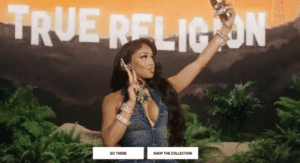 Teledentristy company SmileDirectClub and sleep swaddle brand Nested Bean, two companies highlighted in Chief Marketer’s Brands on Fire and Marketers on Fire features, have shown success in recent years through using a direct-to-consumer business model. Following are six insights about D2C marketing—from customer experience to measurement to segmentation—culled from interviews with John Sheldon, CMO of SmileDirectClub, and Nested Bean Founder and President, Manasi Gangan.
Teledentristy company SmileDirectClub and sleep swaddle brand Nested Bean, two companies highlighted in Chief Marketer’s Brands on Fire and Marketers on Fire features, have shown success in recent years through using a direct-to-consumer business model. Following are six insights about D2C marketing—from customer experience to measurement to segmentation—culled from interviews with John Sheldon, CMO of SmileDirectClub, and Nested Bean Founder and President, Manasi Gangan.
1. Make Customer Experience Your Primary Focus
“As a D2C brand, the most important thing that we’re focused on—and a critical focus of all successful businesses—is improving our customer experience end-to-end,” Sheldon says. “We want to bring our customers closer to each other in community and have them feel closer to our support and dental teams as well, and all the ways that we can help them through their treatment.”
2. Embrace Global Branding—and Beware of Copycats
“The ability for brands to move internationally very quickly is going to become critical,” according to Sheldon. “Copycats have gotten really good, particularly repeating successful disruptive models. They pop up in other countries and get strong footholds just by replicating models that they’re seeing in the larger companies. So, the ability to quickly establish the brand in other countries, and in particular adapting for important cultural nuance, is key. We’ve launched in eight countries over the last year and expect to launch in many more in the coming months and years. I think doing that while maintaining your core essence as a brand is a challenge for any CMO.”
3. The CMO Owns the Number
“In D2C brands specifically, it’s the CMO that owns the number. Revenue is their responsibility,” Sheldon says. “As more brands find aspects of their businesses where they’re going to incorporate D2C-like experiences and more end-to-end experiences, those CMOs are going to have to take on broader responsibility for the end-to-end customer experience as well as for the top line.”
4. Segment Each Customer Journey
“Understand the different parts of your customer’s journey,” Gangan says. “Broadly speaking, every customer enters the funnel through an awareness phase. Because we are the problem-solution type of brand, we break it down into: are they problem-aware or are they not even problem-aware? Meaning, are they an expecting parent and they have no idea about sleeplessness and issues with it, or are they problem-aware but just not brand-aware? We go deep into the awareness phase and through market research, focus groups, surveys, etc., we try to understand the psychographic characteristics of these types of prospects. We started creating these branches. It is important create a little tree of the different types and the journeys your target segments could take. You need to create a custom journey based on the psychographic characteristics of your customer.”
5. Take a Measured Approach
“I’ve been in and around ecommerce and D2C businesses for over 25 years and know most of those businesses are very data-focused companies,” Sheldon says. “I’ve never worked at a more enumerate, more data-driven company than SmileDirectClub. We make all of our investment decisions in advertising, what channels they’re testing, and everything along the way.”
Gangan seconds this idea. “Be as measured about the customer’s or the prospect’s journey as possible,” she says. “Understand what their needs are at each stage of the phase and then provide content that’s extremely relevant to that phase of their journey. If you don’t know something about the customer, don’t just guess. Do a quick little market survey and you’ll get plenty of information.”
6. Define Customer Acquisition Strategy at Each Marketing Stage
“Often early brands will make the mistake of focusing on retention when they don’t have an acquisition volume yet,” Gangan says. “So, let’s say all that effort is being put into retention, and if it’s a really small percentage that is coming through the funnel that’s being acquired, it’s a percentage of a really small percentage that you’re trying to affect. For us, we took a retention as a goal and nurture as a goal a lot later once we had a really strong acquisition strategy that was scaling. Because acquisition at a small scale is very different than acquisition at the large scale. Focus on acquisition, then retention makes sense because you have a decent volume that your efforts are being applied to. At every stage, you have to define your acquisition strategy.”





 Network
Network

